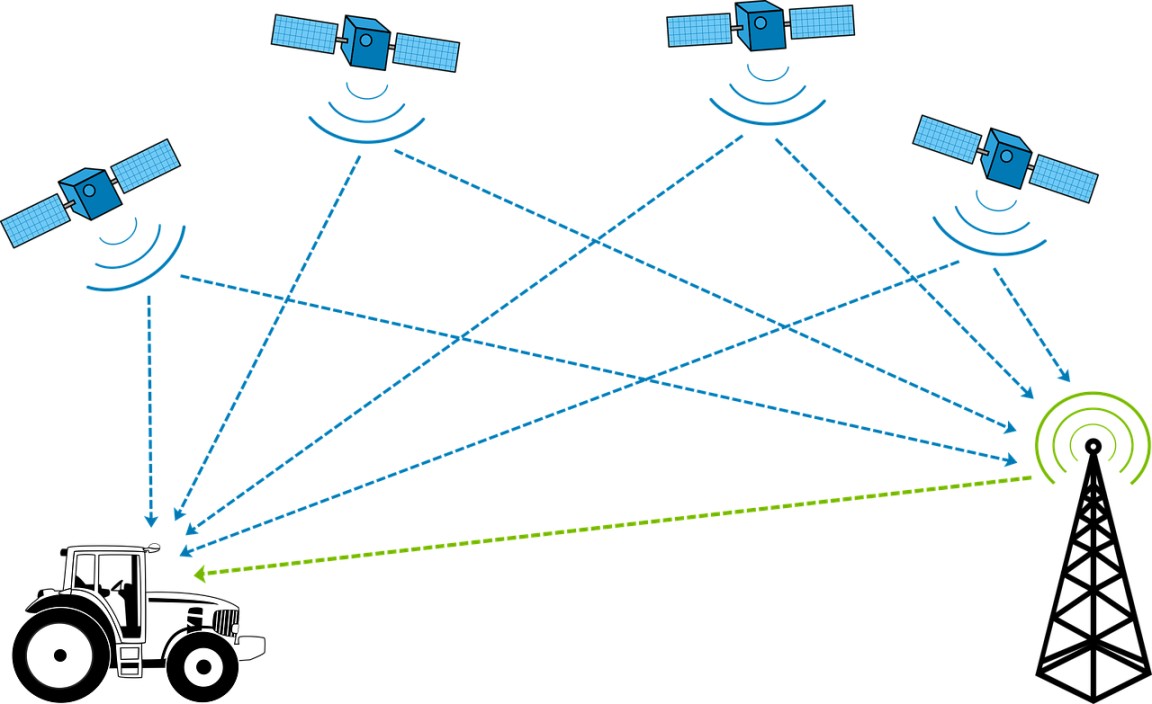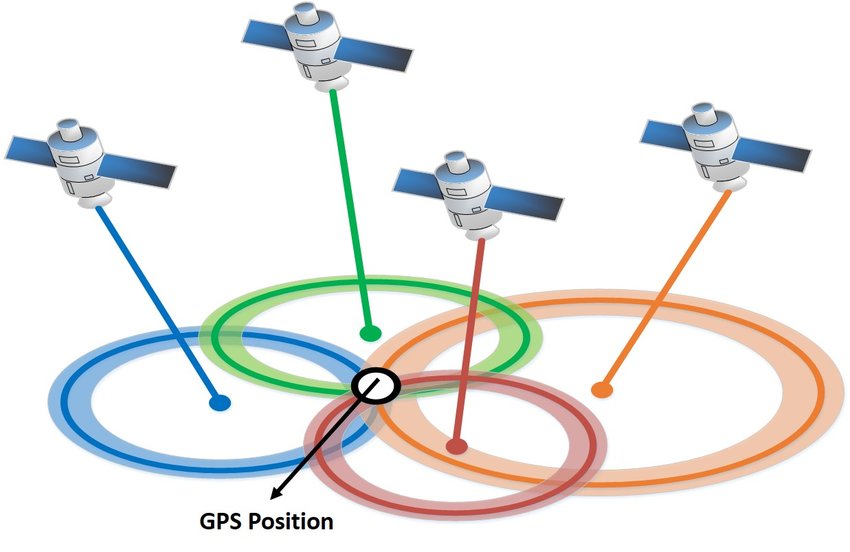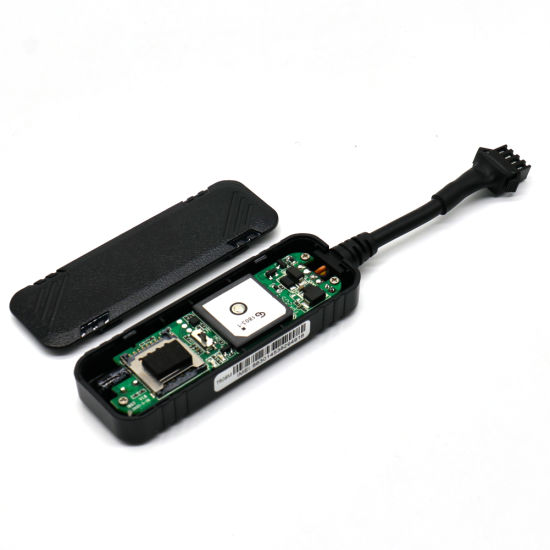
Ever wondered how your phone knows exactly where you are? The answer lies in a remarkable technology called Global Positioning System (GPS). GPS is a network of satellites orbiting Earth that constantly transmit signals. GPS receivers, built into many devices like smartphones and car navigation systems, can pick up these signals and use them to determine their precise location on Earth.
- How does GPS Tracking Systems Work
- Essential Components of a GPS Tracking System
- How GPS Data Gets From Point A to Point B
- GPS technology and Its Uses
- Limitations of GPS Tracking Systems and Special Functionalities
- Real-World Applications of GPS Tracking Systems
How does GPS Tracking Systems Work
The magic behind GPS tracking lies in a network of satellites moving around Earth, constantly transmitting signals that GPS receivers on the ground can use to pinpoint your location. Here’s a breakdown of how it works:
The GPS satellite network:
Imagine a team of 24 to 32 satellites strategically positioned around the globe. These are the GPS satellites, constantly circling Earth in precise orbits. Each satellite broadcasts a unique signal that includes its current time and location.
Trilateration: Math Behind the Magic
Your GPS receiver on the ground isn’t just listening to one satellite; it needs signals from multiple ones (usually at least four) to determine your location. Here’s the cool part: by measuring the time it takes for each satellite’s signal to reach the receiver, the device can perform a mathematical calculation called trilateration.
Think of it like this: imagine you are standing at an unknown point and can measure the distance to three different landmarks. Using trigonometry, you can pinpoint your exact location based on those distances. That’s essentially what trilateration does with the signals from the GPS satellites. By knowing the exact location of each satellite (thanks to their constant signal broadcasts) and measuring the signal travel time, the GPS receiver can calculate your latitude, longitude, and even your altitude!

In simpler terms: The more GPS satellite signals your receiver can pick up, the more accurate your location data will be. That’s why sometimes you might see a slight delay or lower accuracy in areas with limited satellite visibility, like between tall buildings or under dense tree cover.
Essential Components of a GPS Tracking System
Now that we understand the basic concept of GPS, let’s look into the components that make a GPS tracking system function.

1. The GPS Receiver: Your Mini-Satellite Decoder
Think of the GPS receiver as the brain of the tracking system. It’s a tiny computer chip designed to:
- “Hear” the Satellites: The receiver is equipped to pick up the weak radio signals constantly transmitted by GPS satellites orbiting Earth.
- Decode the Message: These signals contain specific data, including the satellite’s identification and the exact time the signal was sent. The receiver deciphers this information.
- Calculate Your Location: The receiver uses a mathematical process called trilateration (explained earlier) to determine your position based on the signals from multiple satellites.
2. The GPS Antenna: Reaching Out to Space
A GPS antenna acts like a mini radio tower specifically tuned to receive the faint signals from GPS satellites. Since these signals are weak, a good antenna is crucial for optimal performance.
3. Sending Your Location on the Move (Optional):
While some basic trackers might store location data internally, most systems incorporate additional communication modules. These modules, like cellular chips or Bluetooth, allow the tracker to:
- Transmit Location Data: The tracker sends the calculated location data (latitude, longitude) to a central server or designated smartphone app.
- Stay Updated: Depending on the system design, this data transmission can happen in real-time or at set intervals.
These all components are now included inside the GPS tracking devices as inbuilt components. The inclusion of cellular or other communication modules depends on the complexity of the GPS tracking system. Simpler trackers might focus on data storage for later retrieval, while more advanced systems offer real-time location updates.
How GPS Data Gets From Point A to Point B
Once the GPS receiver in your tracking device has locked onto several satellites and determined its location, it’s time to share that information with the outside world. Here’s how the data journy unfolding to gathering Location Updates:
- Frequency on Demand: GPS trackers can be programmed to update their location at various intervals. These intervals can range from a few seconds (for real-time tracking) to hours (for battery conservation). The update frequency depends on the specific needs of the user. For example, a fleet manager might want constant updates on their vehicles, while someone tracking a lost pet might be happy with less frequent checks.
- Cellular Connection: Many GPS trackers rely on cellular networks to transmit location data. The tracker essentially acts like a miniature cell phone, using cellular towers to send the data securely to a central server. This method allows for real-time tracking and works almost anywhere with cellular coverage.
- Alternative Methods: Some GPS trackers may use alternative methods for data transmission, such as Wi-Fi or satellite communication. Wi-Fi can be useful for indoor tracking or in areas with limited cellular coverage, while satellite communication offers global coverage but might come at a higher cost.
GPS technology and Its Uses
GPS tracking systems have become an invisible force woven into the fabric of our daily lives. Their ability to pinpoint the location of anything with a receiver has revolutionized various industries and personal routines. Let’s explore some of the most common applications of GPS tracking.

1. Keeping Businesses Running Smoothly:
Fleet Management: Businesses with delivery trucks, taxis, or service vehicles rely on GPS trackers to monitor their fleet’s location and optimize routes. This improves efficiency, reduces fuel costs, and ensures timely deliveries.
Asset Tracking: Construction companies use GPS trackers to locate expensive equipment like bulldozers or cranes, preventing theft and streamlining project management.
2. Ensuring Personal Safety and Security:
Wearable GPS Devices: GPS trackers embedded in wearables like watches or medical alert bracelets provide peace of mind for children, elderly individuals, or those venturing outdoors alone. In case of emergencies, caregivers or loved ones can easily locate them.
Stolen Vehicle Recovery: Cars equipped with GPS trackers can be traced by authorities in case of theft, increasing the chances of retrieval.
3. Optimizing Your Day-to-Day Activities:
Fitness Trackers: Many fitness trackers incorporate GPS to map your running or cycling routes, calculate distances accurately, and track progress over time.
Pet Trackers: Concerned pet owners can attach GPS trackers to their furry companions’ collars, allowing them to locate their pets if they wander off.
4. Beyond Traditional Applications:
Search and Rescue: GPS plays a crucial role in search and rescue operations, helping locate lost hikers, mountain climbers, or individuals in distress.
Environmental Monitoring: Researchers use GPS-tagged devices to track wildlife migration patterns, monitor endangered species, and study animal behavior.
These are just a few examples of how GPS tracking systems have transformed various aspects of our lives. As technology continues to evolve, we can expect even more innovative applications of GPS tracking to emerge in the future.
Limitations of GPS Tracking Systems and Special Functionalities
The chosen data transmission method impacts factors like:
- Battery Life: Cellular transmission consumes more battery power than other methods. Frequent updates will drain the battery faster.
- Real-Time vs. Periodic Updates: Cellular networks offer the fastest and most reliable way to get real-time location data. Alternative methods might have delays in transmitting updates.
- Coverage: Cellular networks have limitations in remote areas. Wi-Fi requires a Wi-Fi network to be in range. Satellite communication offers the most extensive coverage but might be more expensive.
By understanding these factors, users can choose a GPS tracking system that best suits their needs and priorities.
in addition to basic location tracking, some GPS trackers offer functionalities that can enhance their usefulness:
- Speed Monitoring: This feature allows you to track the speed of the asset being monitored. This can be helpful for businesses managing fleets of vehicles to ensure safe driving practices and optimize routes. Imagine a delivery company using GPS tracking with speed monitoring to monitor speeding drivers and improve delivery times.
- Geofencing Alerts: Geofencing allows you to define virtual boundaries around a specific area. If the GPS tracker enters or exits this designated zone, you will receive an alert. This can be useful for tracking children or pets, monitoring valuable equipment, or ensuring deliveries stay on schedule. For instance, parents can set up geofences around their child’s school and receive alerts if their child leaves the school zone during school hours.
Real-World Applications of GPS Tracking Systems
GPS tracking technology goes beyond just finding your way on a map. Businesses and individuals alike utilize its power for various purposes:
1. Fleet Management:
For companies with vehicles on the road, GPS tracking is a game-changer. Imagine a delivery company knowing exactly where their trucks are in real-time. This allows them to:
Optimize Routes: Plan the most efficient routes for drivers, saving time and fuel.
Monitor Driver Behavior: Track speeding, unnecessary stops, and overall driving efficiency.
Improve Customer Service: Provide accurate delivery ETAs (Estimated Time of Arrival) to customers.
2. Personal Safety:
Peace of mind comes with knowing your loved ones are safe. GPS tracking devices worn as wearables offer security for:
Children’s Safety: Monitor your child’s whereabouts after school or during outdoor activities, providing a sense of security.
Elderly Care: Track the location of seniors who may wander or get lost, ensuring their well-being.
3. Asset Tracking:
Ever misplaced valuable equipment or inventory? GPS tracking offers a solution for:
Construction Equipment tracking: Keep tabs on expensive machinery like bulldozers or cranes, preventing theft and loss.
Medical Equipment: Track the location of vital medical devices, ensuring they are readily available when needed.
High-Value Inventory: Monitor the movement of valuable goods during transport or storage, minimizing loss risks.
Secure Your Assets with GPS Tracking in Sri Lanka
Protect your valuables and improve efficiency with a reliable GPS tracking system from Kommnet Technologies. We offer a range of GPS trackers suitable for various needs, from monitoring vehicles and fleets to safeguarding personal belongings.
Here’s what you can achieve with our GPS tracking solutions:
- Real-time peace of mind: Track the location of your vehicles, equipment, or loved ones in real-time, 24/7, from anywhere in Sri Lanka.
- Enhanced security: Deter theft and recover stolen assets faster with real-time location updates and geofence alerts.
- Improved fleet management: Optimize delivery routes, reduce fuel costs, and gain valuable insights into driver behavior.
- Increased productivity: Monitor employee activity and streamline operations for better resource allocation.
Ready to experience the benefits of GPS tracking?
Browse our selection of GPS trackers: Find a solution that perfectly fits your needs and budget. We offer trackers for vehicles, motorcycles, personal use, and more.
Click on live chat to contact our Sri Lanka-based support team: Our friendly and knowledgeable representatives are happy to answer your questions and guide you towards the best tracking solution.
